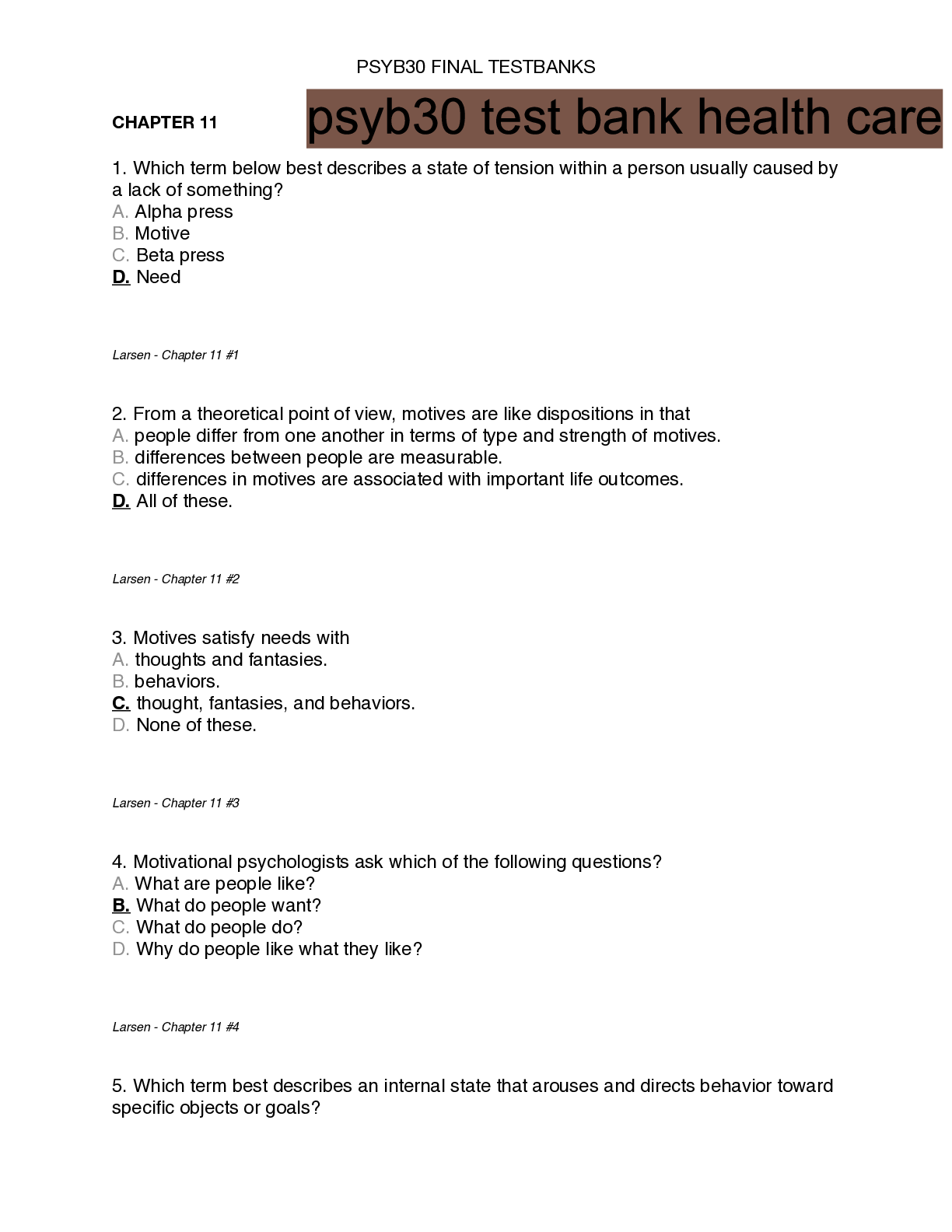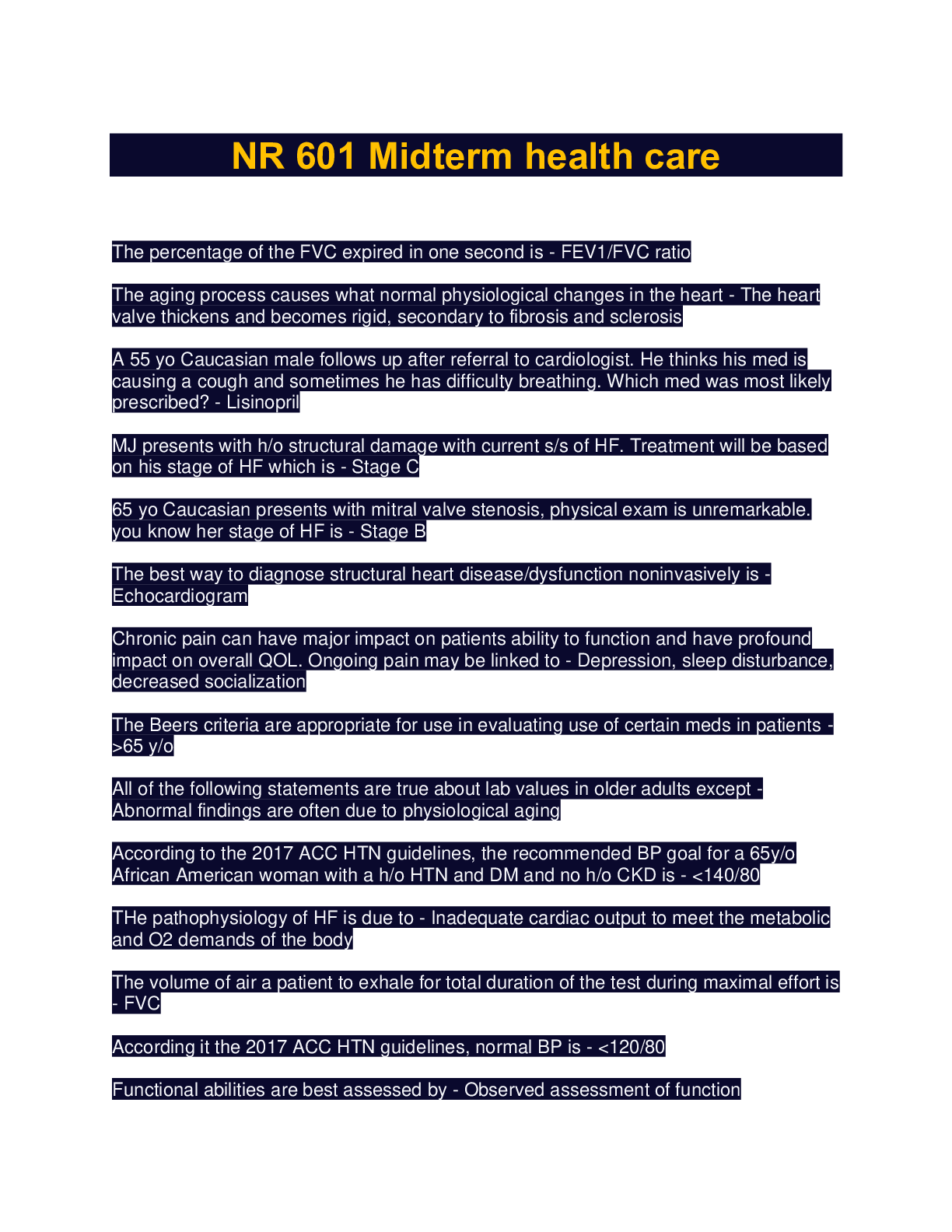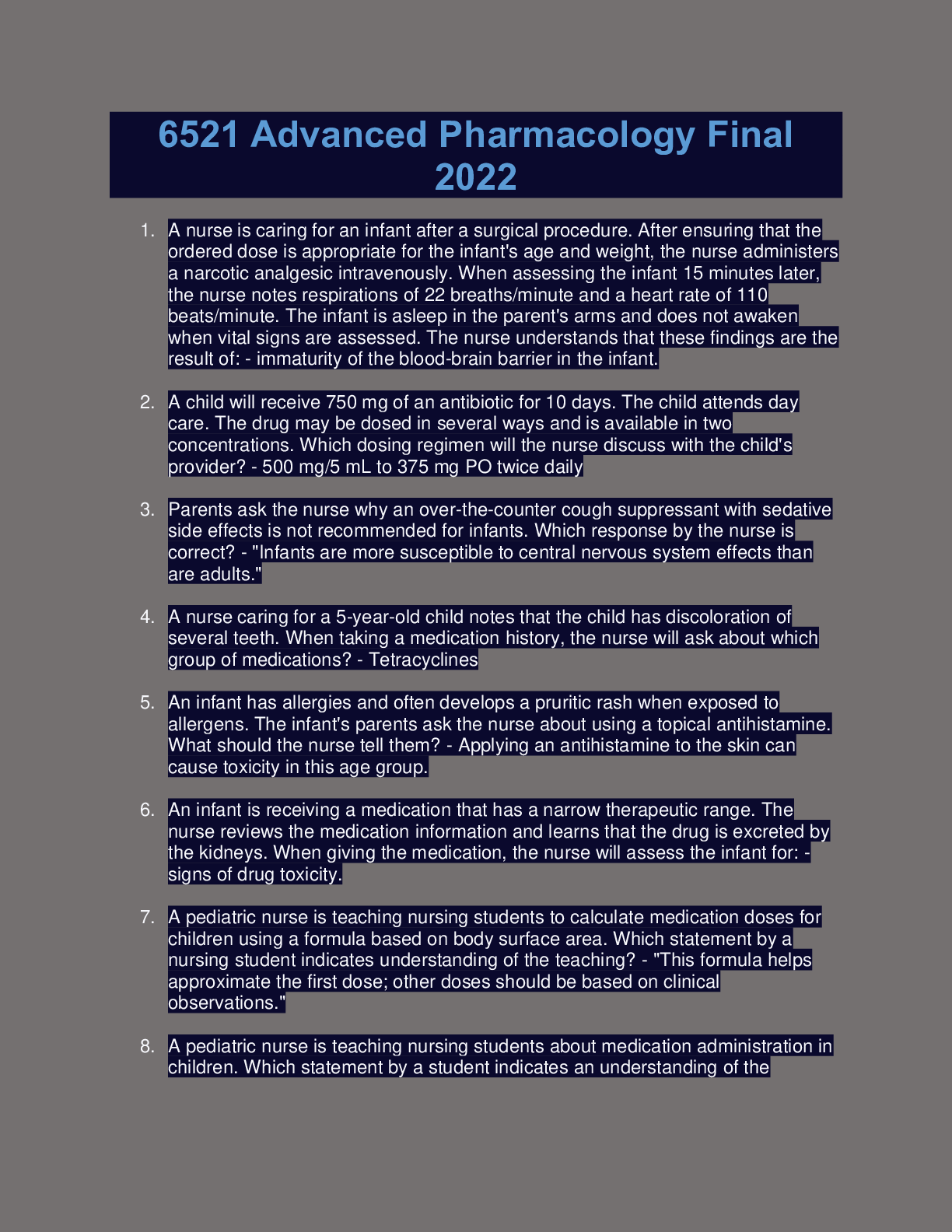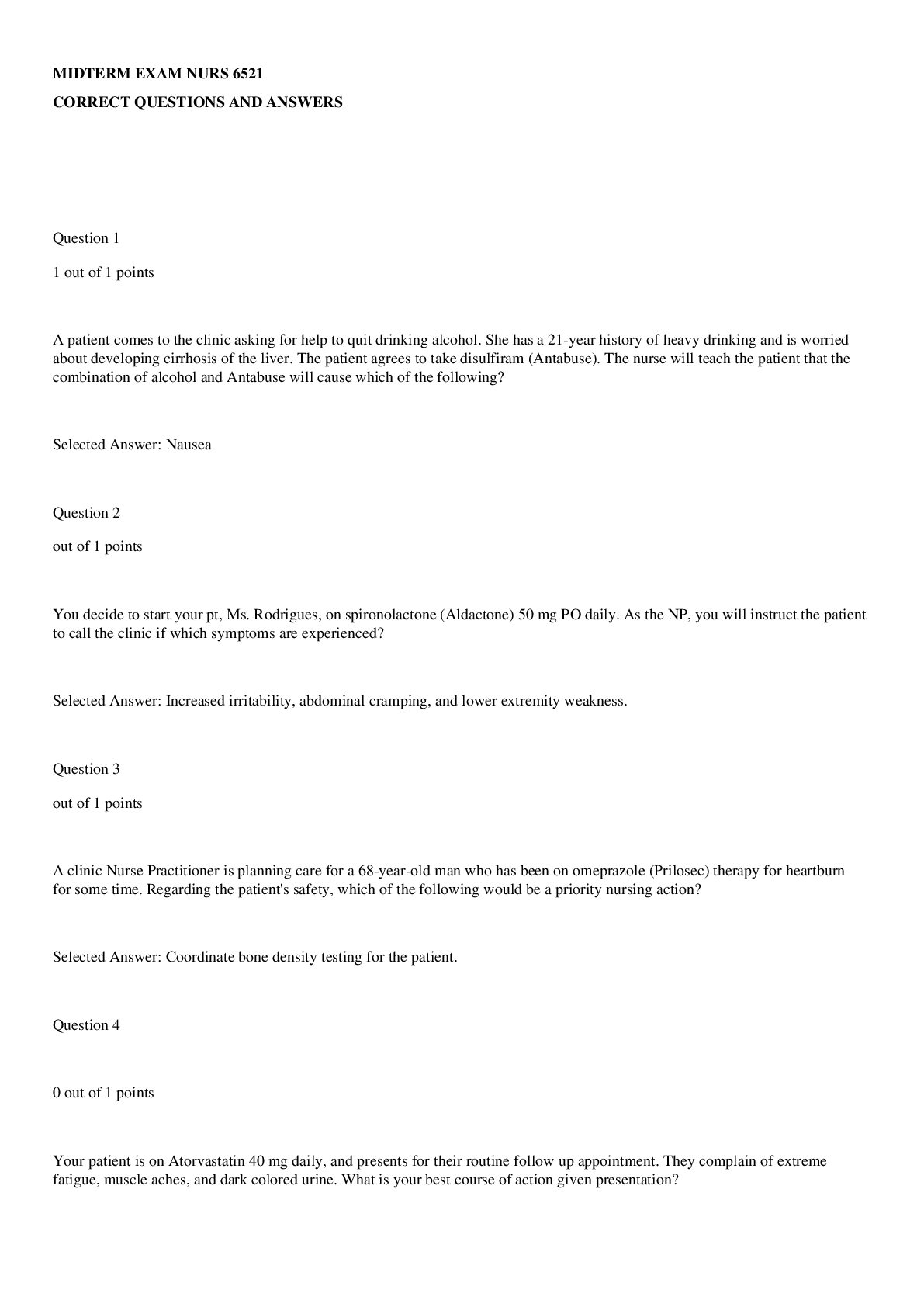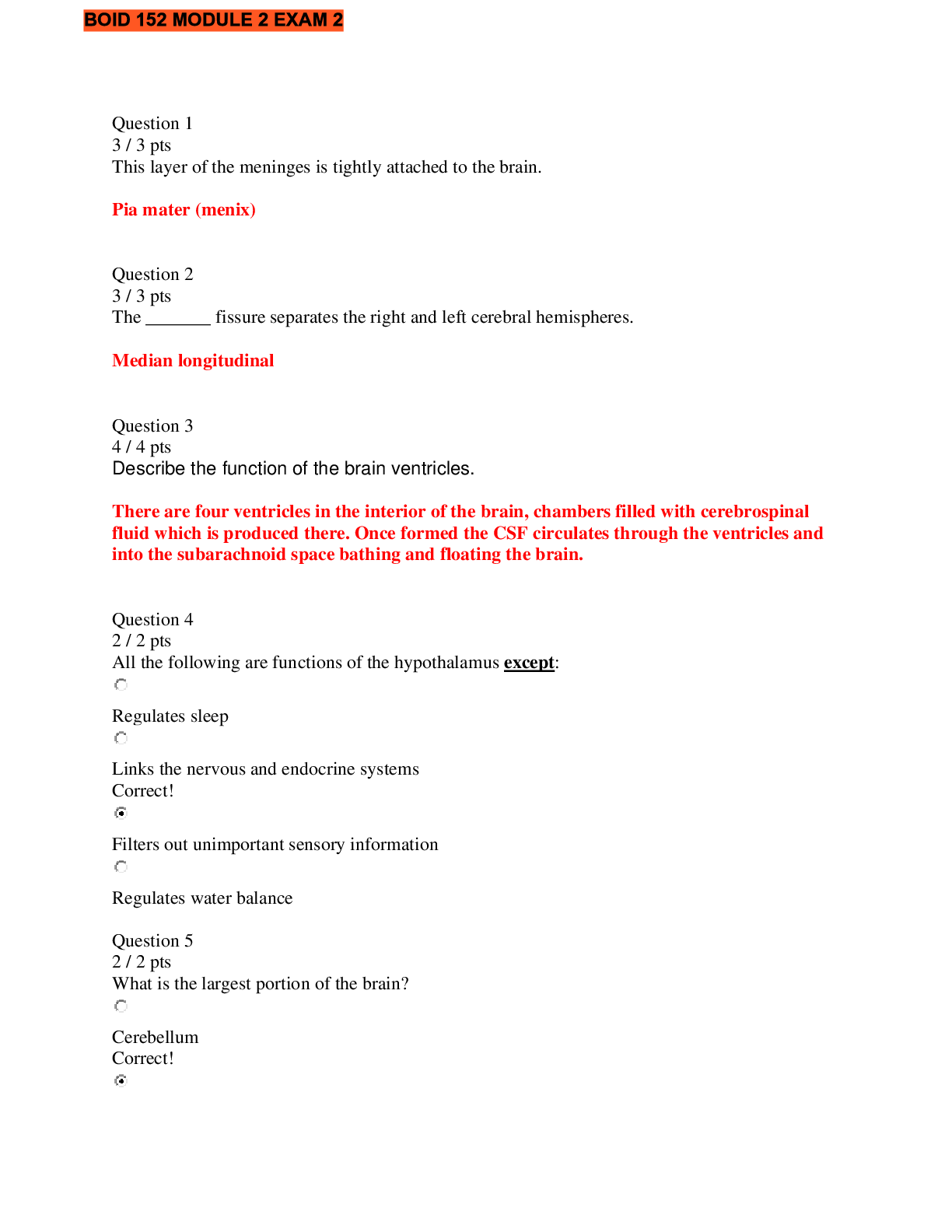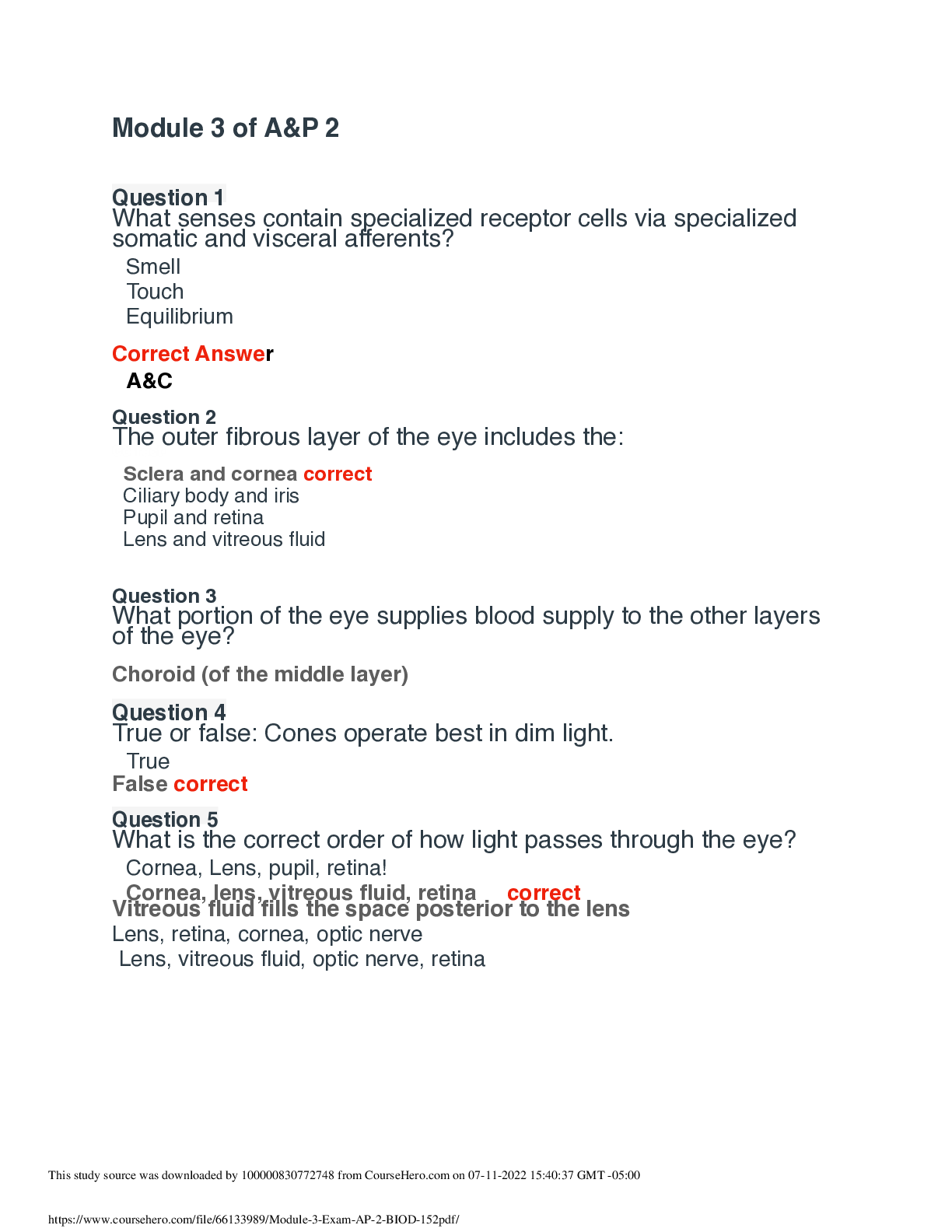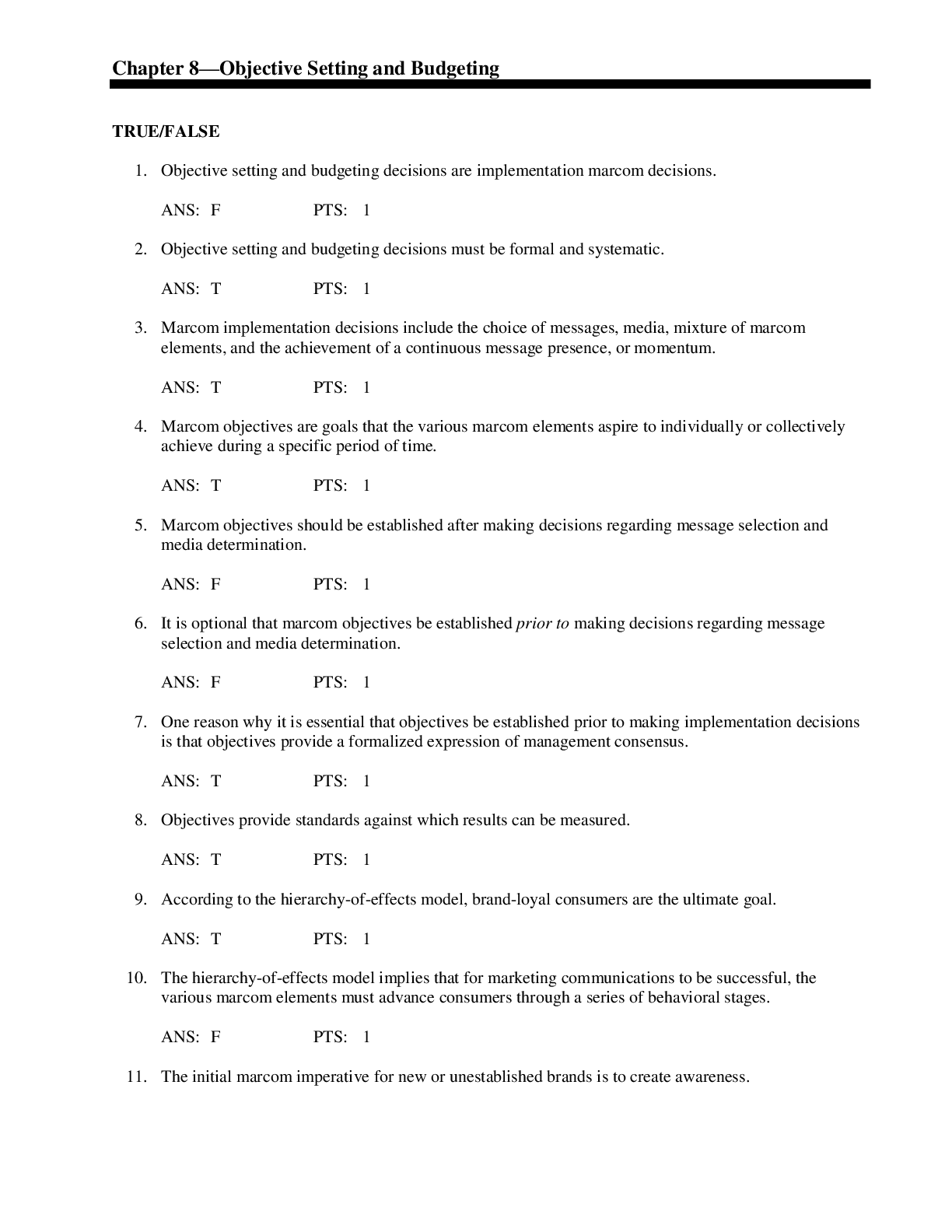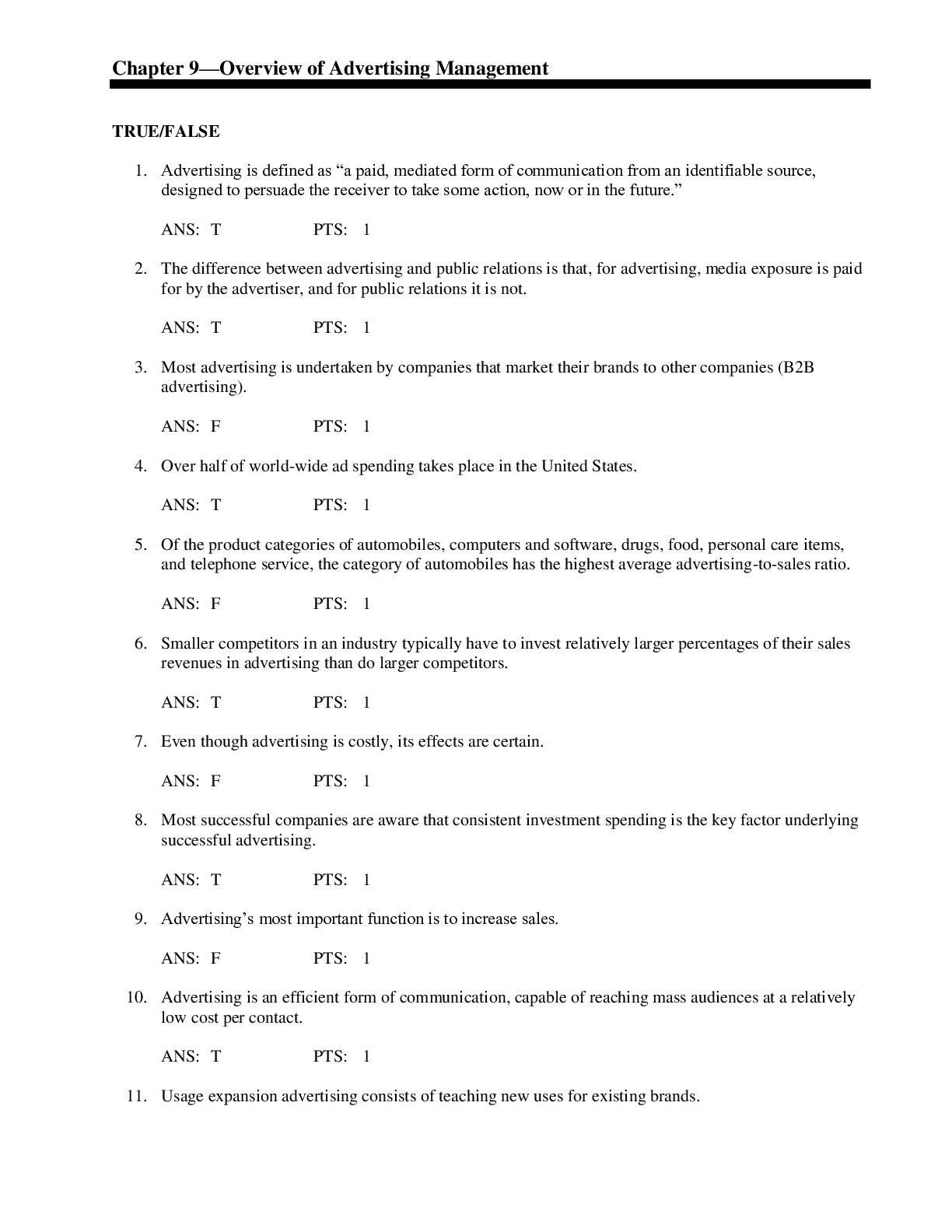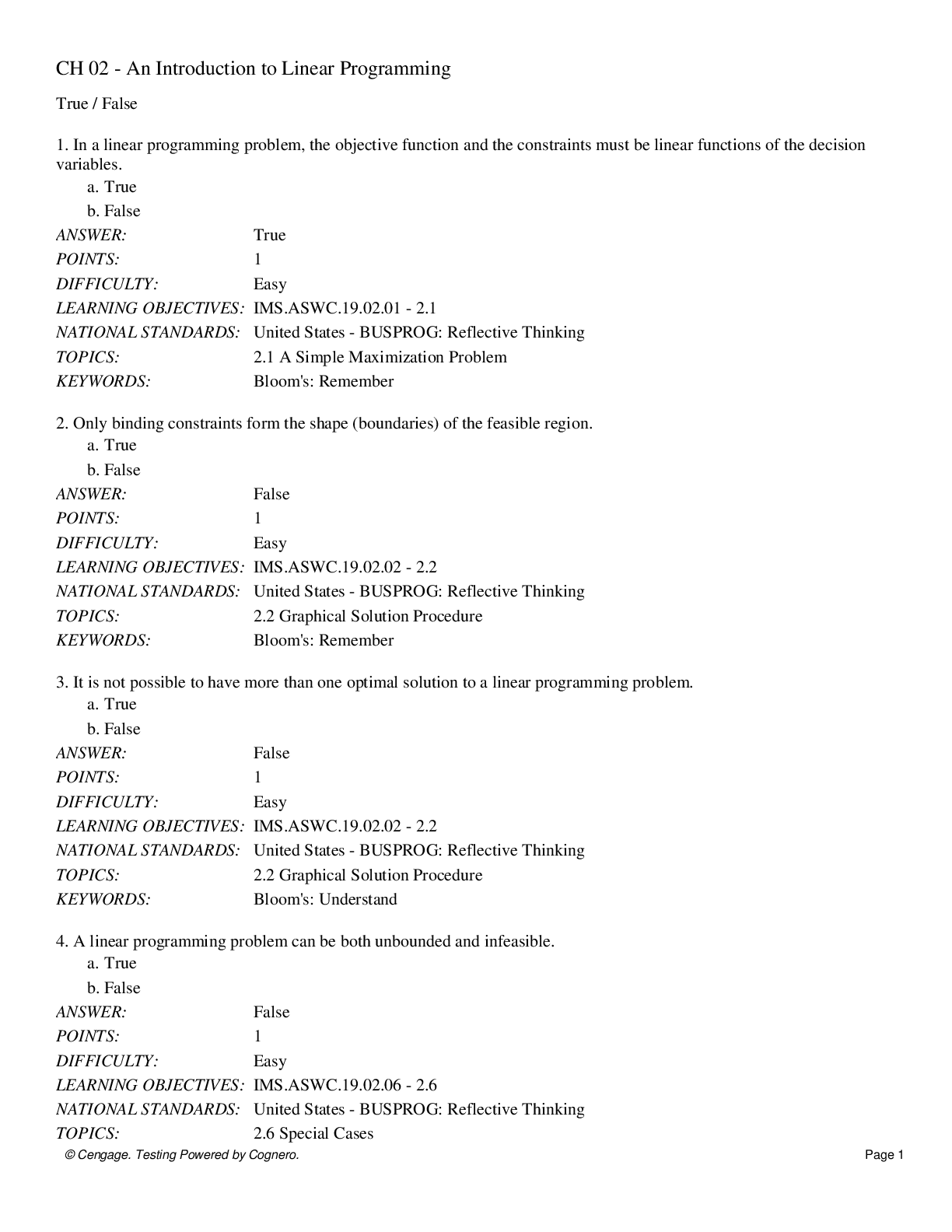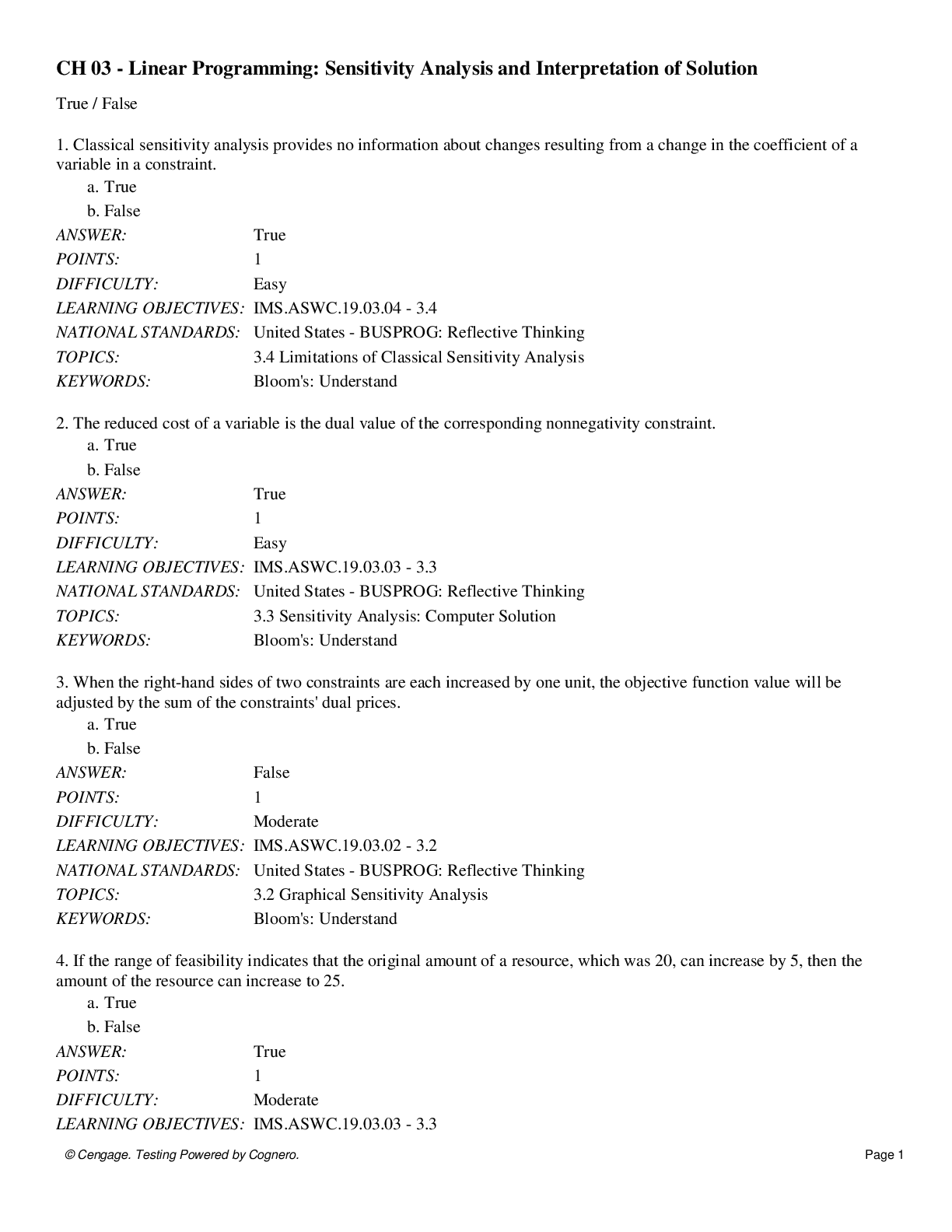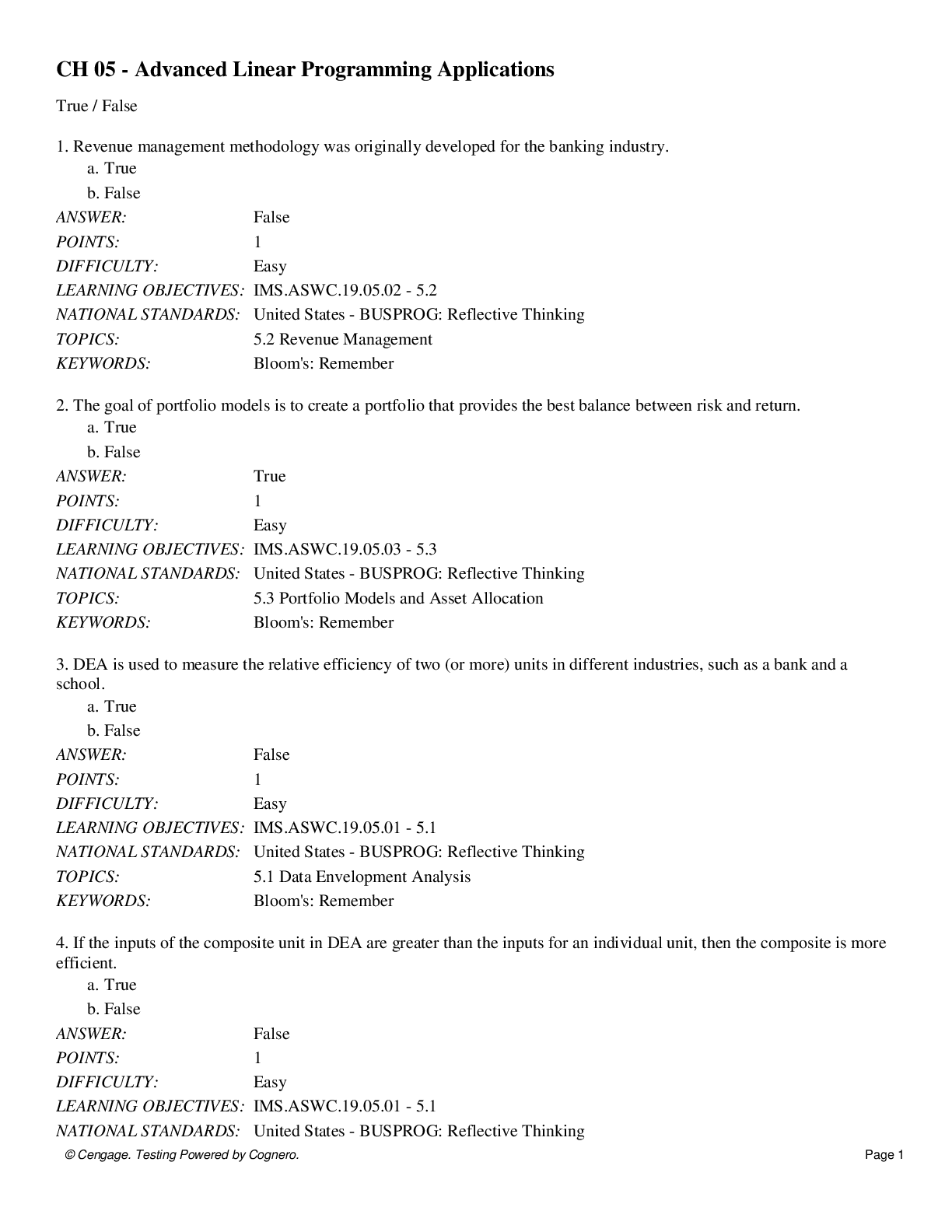Biology > QUESTIONS & ANSWERS > BIOL 235 Assignment 1 FINAL QUESTIONS AND ANSWERS 2022 (All)
BIOL 235 Assignment 1 FINAL QUESTIONS AND ANSWERS 2022
Document Content and Description Below
Maintenance of calcium ion is critical to neurological, cardiac and skeletal muscle function. Consider the roles of 2 hormones involved in the regulation of the concentration of calcium ions in the b... lood. Parathyroid hormone increases the concentration of calcium ions in the blood, while calcitonin decreases the concentration. Based on this information predict the bod’s response to restore calcium balance if a person swallowed 100 antacid tablets made up of a calcium compounds in 10 minutes. Include in your answer the definition of homeostasis, the type of feedback loop involved and all the components of a feedback loop. Homeostasis is defined as the state of equilibrium (balance) in the body’s internal environment with respect to the constant interaction of the body’s many regulatory process. In response to any changing conditions, the body’s equilibrium can shift and the idea of homeostasis is to help maintain the body’s regulatory processes at optimal level. In this case, since a person has swallowed 100 antacid tablets made of calcium compound in 10 minutes, the body now has more calcium than is needed in its body, which is disrupting its calcium homeostasis. In response to this stimulus, a negative feedback loop would be activated where the hormone, calcitonin will decrease the concentration of calcium hence reversing the change of increased calcium levels in the body until it reaches its optimal state. The stimulus in the body is recognized as the calcium blood levels rise above normal, which is affecting the controlled condition. In response to this change, parafollicular cells in the thyroid gland secrete calcitonin. This hormone specifically inhibits activity of osteoclasts (the effector in this negative feedback loop), which are the cells responsible for bone resorption (breaking down bone). Calcitonin also speeds blood calcium reuptake and accelerates calcium deposition into bones. All these factors result in calcitonin promoting bone formation and decreasing the overall blood calcium level ultimately reaching a state of a balanced calcium homeostasis. 2) Provide one important example (in the human body) of each of the following: a. A molecule containing ionic bond An ionic bond is the force of attraction that holds together ions with opposite charge. One example would be salt, composed of sodium, Na+ and chlorine, Cl- . b. A molecule containing covalent bonds A covalent bond forms where two or more atoms share electrons rather than gaining or losing them. These bonds can form between atoms of the same element or between atoms of different elements. One example would be glucose. c. A molecule containing hydrogen bonds A hydrogen bond forms when a hydrogen atom with a partial positive charge attracts the partial negative charge of neighbouring electronegative atoms, usually larger oxygen or nitrogen atoms. Hydrogen bonds are responsible for holding the base pairs in the middle of the DNA structure thus creating a double helix structure. What is the function of each of these three molecules you have identified in the human body? Explain why each of these three molecules must have its specific types of bonds in order to perform that molecule’s function. Sodium chloride is important for maintaining fluid balance. It also plays a role in nerve impulse transmissions. In an ionic bond, sodium donates an electron to the chlorine to form a bond, the net result is salt, which can be easily dissolved in water. Further, the ions Na and Cl can be found in sweat that is produced by the eccrine sweat gland. Glucose is an important source of energy in the human body. It is broken down and used by our brain to perform basic functions and higher order executive functions. However, as too little glucose may cause mental fatigue, excess glucose is also not healthy for the body. 1 This study source was downloaded by 100000830772748 from CourseHero.com on 01-19-2022 02:50:17 GMT -06:00 https://www.coursehero.com/file/17595575/BIOL-235-Assignment-1-FINAL/ BIOL 235 ASSIGNMENT 1 Olivia Low (ID: 3298036) DNA is important as it holds the genetic information, it is the “blueprint” of our body. The hydrogen bonds in DNA strengthen it and can be found between each of the atoms. Collectively, hydrogen bonds provide considerable strength and stability and help determine the 3D shape of large molecules. 3) Define mitosis and meiosis, and describe the differences between these two processes. Mitosis is the categorization of somatic cell division that a cell undergoes followed by cytokinesis to produce 2 genetically identical cells each with the same number of chromosomes as the original cell. Mitosis is significant as it replaces injured or dead cell and adds new cells for tissue growth. It involves 4 stages described as prophase, metaphase, anaphase and telophase. Meiosis is the reproductive cell division that occurs in the gonads (ovaries and testes) producing gametes, which are the cells needed to form the next generation of sexually reproducing organisms. Meiosis consists of 2 successive stages known as meiosis I and meiosis II. As a result, the chromosomes are reduced by half where each gamete containing a single set of 23 chromosomes. The major differences between mitosis and meiosis are listed below in the table: Mitosis Meiosis Somatic cell division Gamete cell division Copies DNA in interphase stage Copies DNA in interphase 1, but not in interphase 2 Produces 2 diploid daughter cells Produces 4 haploid (23 chromosomes) gametes 4) List the skin glands and write details about their functions. What would be the consequences if a person’s skin glands stopped functioning? There are 3 different types of skin glands: sebaceous (oil) glands, sudoriferous (sweat) glands and ceremonious glands 1. Sebaceous (Oil) Glands: Simple branched acinar (rounded) glands that are connected to hair follicles. The secreting portion of the gland is found in the dermis and usually opens into the neck of the hair follicle whereas in other locations it opens directly onto the surface of the skin. The sebaceous glands secrete sebum, which is categorized as an oily substance. Sebum helps to coat the surface of hairs, which helps keep them from drying and becoming brittle. It also prevents excessive evaporation of water from the skin, which allows the skin to say soft and pliable. If these glands were to stop functioning, a person’s hair and skin would not be properly moisturized, which would completely dry the skin. Further, sebum also helps to inhibit growth of some bacteria meaning it can also contribute to the prevention of infections. When an adolescent reaches puberty, androgens stimulate the sebaceous glands to increase in size and produce more sebum. Acne occurs when a sebaceous gland undergoes inflammation, which usually begins around puberty. A condition called cystic acne which is caused by an infection of a cyst or sac of connective tissue cells can destroy epidermal cells causing permanent scarring of the epidermis. 2. Sudoriferous (Sweat) Glands: Cells of sudoriferous gland release perspiration or sweat onto the surface of the skin through pores or into hair follicles. There are 2 different types of sweat glands, eccrine and apocrine glands that are differentiated by their structure and type of secretion. Eccrine glands are more common than apocrine glands and are distributed throughout most regions of the body, especially in the skin of the forehead, palms and soles. In the deep dermis, the secretly portion of the eccrine gland can be found and the sweat that is produced consists primarily of water with small amounts of ion (Na and Cl), urea, uric acid, ammonia, amino acids, glucose and lactic acid. The main function of the endocrine sweat glands is to help regulate body temperature through evaporation. As the sweat evaporates, large quantities of heat energy also leave the body surface. This homeostatic regulation is known as 2 This study source was downloaded by 100000830772748 from CourseHero.com on 01-19-2022 02:50:17 GMT -06:00 https://www.coursehero.com/file/17595575/BIOL-235-Assignment-1-FINAL/ BIOL 235 ASSIGNMENT 1 Olivia Low (ID: 3298036) thermoregulation. If sweat was not able to be produced from eccrine glands, our bodies would not be able to regulate our body temperature therefore never reaching homeostasis. Sweat produced by eccrine sweat glands also plays a small role in eliminating wastes such as urea, uric acid, and ammonia from the body. Eccrine sweat glands also play a role in response to emotional stress such as fear or embarrassment. However, in contrast to thermoregulatory sweating, emotional sweating first occurs on the palms, soles, axillae and then spreads to other areas of the body. Apocrine sweat glands are found mainly in the skin of the axilla (armpit), groin, areolae (pigmented areas around the nipples) of the breasts and bearded regions on the face of adult males. The sweat secreted from apocrine glands appear a yellowish or milky in colour, which contain the same components of eccrine sweat in addition to lipids and proteins. The sweat is odourless, does not function until puberty and is only secreted during sexual activities. Apocrine sweat glands do not play a role during emotional sweating like eccrine glands do. [Show More]
Last updated: 1 year ago
Preview 1 out of 8 pages
Instant download
.png)
Buy this document to get the full access instantly
Instant Download Access after purchase
Add to cartInstant download
Reviews( 0 )
Document information
Connected school, study & course
About the document
Uploaded On
Jan 19, 2022
Number of pages
8
Written in
Additional information
This document has been written for:
Uploaded
Jan 19, 2022
Downloads
0
Views
198

